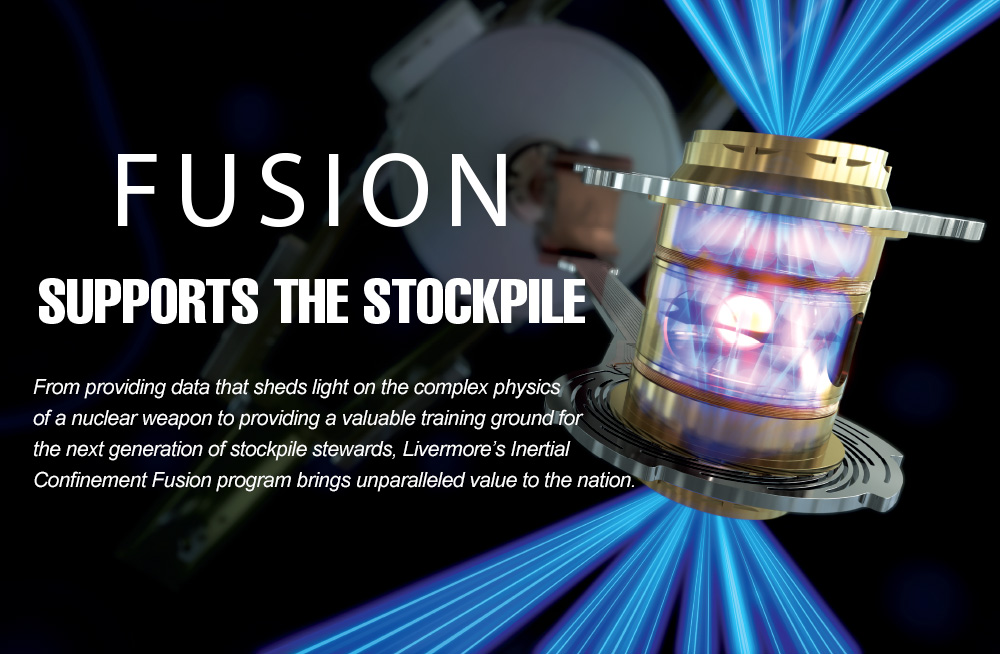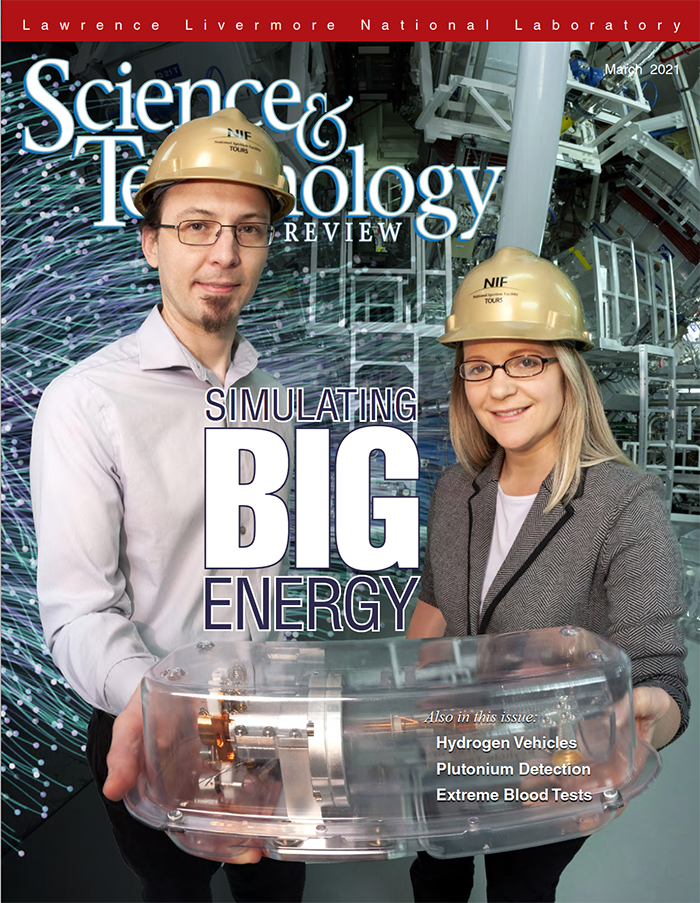Fusion Supports the Stockpile
July 28, 2021

The following is an excerpt from the cover story by Ann Parker in the March 2021 issue of Science & Technology Review:
The last U.S. underground nuclear explosive tests, which were key to assessing the design and viability of the country’s nuclear weapons, occurred over 27 years ago. However, the need for deeper understanding of the complex physical processes that drive nuclear weapon performance and for putting stockpile design and assessment on a solid science-based foundation continue to be of utmost importance to the nation.
 Cover of Science & Technology Review, March 2021.
Cover of Science & Technology Review, March 2021. A core mission of the Department of Energy (DOE)’s National Nuclear Security Administration (NNSA) is to ensure this stockpile remains safe, secure, and reliable, without further underground testing.
LLNL’s Inertial Confinement Fusion (ICF) program supports the Stockpile Stewardship Program (SSP) mission by seeking to recreate and examine the processes that occur in the heart of burning stars and nuclear weapons, through heating a tiny amount of encapsulated fusion fuel and compressing it to the point that nuclear fusion reactions occur.
The data from experiments at ICF facilities help to refine computer models used to better understand and assess the performance of the stockpile’s aging nuclear weapons. These experiments also provide an opportunity for weapon designers, experimentalists, engineers, and staff to tackle challenging design problems in the absence of underground nuclear explosive testing, thereby developing and refining the skills needed to support the SSP.
This dedicated workforce turns to platforms of immense energy and engineering prowess, such as the world’s largest and most energetic laser—the NNSA’s 192-beam National Ignition Facility (NIF), located at Livermore—to meet the SSP mission, now and in the future.
Science Reveals the Stockpile
The end of underground testing and DOE’s creation of the science-based SSP significantly increased the need to have a detailed scientific understanding of nuclear weapons and how they work. This requirement ushered in an era of large-scale experimental platforms and high-performance supercomputing facilities, paired with cutting-edge diagnostic capabilities.
A detonating nuclear weapon passes through many regimes of temperature and pressure, requiring myriad tools and facilities to study the different regimes. However, the overwhelming majority of the energy yield from a nuclear weapon is produced in the high-energy-density (HED) state, with temperatures and pressures ranging from those found at the center of the earth to those at the center of the sun.
These extreme conditions of temperature, pressure, and material densities can only be created in unique experimental facilities. Three NNSA facilities provide the energies and diagnostics to help scientists delve into this challenging environment: Sandia National Laboratories’ Z-Machine (the world’s most energetic pulsed-power facility), the University of Rochester’s Omega laser facility, and NIF.
Mark Herrmann, Livermore’s Deputy Program Director for Fundamental Weapons Physics, notes, “NIF provides us with experimental data in the higher-end temperature, pressure, and density regimes to measure our computer models against and provides insights into weapons performance.”
To read the full story, which includes a related story, “The Quest for Fusion Ignition and the Birth of Science-based Stockpile Stewardship,” go to Science & Technology Review.
More Information
“Commentary by Kim Budil: Pursuing Ignition for National Security,” Science & Technology Review, March 2021
—Ann Parker
Follow us on Twitter: @lasers_llnl



